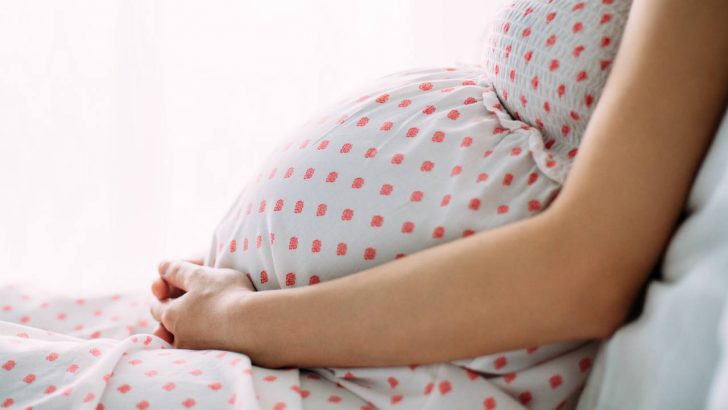The View
Ireland has a proud record of environmental protection. It is good to see the concern which enables the continued protection of pygmy stoats, red squirrels, otters, pine martens, badgers, hares, all bat and deer species, the Natterjack Toad and the Common Newt, almost all resident wild birds, the White-clawed Crayfish, the Freshwater Pearl Mussel and the Kerry Slug. The Wildlife Act confers strict protection from injury, disturbances and damage to breeding and resting sites for these creatures. Similarly it is illegal to cut, uproot or damage a listed species of flora or their habitats.
Anyone who hunts, kills, injures or wilfully interferes with or destroys a breeding or resting place is guilty of an offence. Penalties include fines of up to Euro100,000 and imprisonment of up to 5 years.
Ireland, which recognises the need to protect developing embryonic squirrels, bats etc, will no longer protect embryonic babies, for whom there will now be provision for the termination of their lives.
Context
It is interesting to reflect on these issues in the context of the recently published draft abortion legislation. There are four situations in which an unborn baby will be at risk of abortion:
1.An unborn child can be aborted up to “viability” if there is a risk to the life or of serious harm to the physical or mental health of the pregnant woman. Viability is described as the point in a pregnancy at which, in the reasonable opinion of a medical practitioner, the foetus is capable of survival outside the womb without extraordinary life- sustaining measures. Since all babies born early are treated using a range of necessary life sustaining measures, any such measure could not be regarded as being “extraordinary.“ In the absence of any definition of “serious harm” GPs and other doctors will have to make an objective decision about what is serious harm to health, mental or physical. This will not be easy. Those situations should be exceptional in a country like Ireland where good ante-natal care should pick up emerging problems, allowing them to be dealt with before they re-present as a crisis.
2.In any situation where there is an immediate risk to the life or of serious harm to health, mental or physical, and the doctor thinks it is immediately necessary to do so, the baby can be aborted up to birth. There is no distinction between a woman with a life threatening condition which requires immediate surgery, in which case either the surgery is done or both mother and child die, and the woman who is threatening to commit suicide unless she gets the abortion of her unborn child, or the woman who says she really could not cope mentally with giving birth to a baby who has a cleft palette or a club foot, or even a missing limb. There is no provision for taking time to attempt to deal with mental health conditions which, rather than being alleviated by abortion, may actually be aggravated when the woman comes to realise what has happened. Miss C, who was brutally raped was taken into care and had her baby aborted against her parents wishes, said this in 2015, “My name – the C-case girl – is brought up on radio and TV all the time these days as if I’m an ad for abortion. …for me, it has been harder to deal with than the rape.
“It only really hits you after you have children. You never forget your missing baby. It plays on your mind every day. Any woman who has an abortion and then goes on to become a mother will know all about it afterwards.”
3.If the unborn baby suffers from a condition affecting the foetus that is likely to lead to the death of the foetus either before, or within 28 days of birth, the baby can be aborted at any time – even up to delivery. How are we to know what conditions are anticipated here? Many serious conditions affecting children can be treated. The anticipation must therefore be that this provision will only apply if there is no treatment which would keep the baby alive, as so many babies are kept alive in the early days because of their fragility. How are doctors to deal with complexities of this kind?
4.Any woman who is pregnant will be able to have an abortion up to twelve weeks on demand. There is no situation in which a pregnant woman can be refused an abortion and there is no provision for time (part from a 72 hour period) for a woman, who may well be absolutely terrified to reflect, find out what help might be available to her, really consider her options.
For doctors who believe in what is described as the first principle of medicine, “to do no harm”, and who became doctors and obstetricians to save life, not to carry out abortions, who see before them when they encounter a pregnant woman not one patient but two, these are going to be very difficult situations.
There will be no protection for pharmacists who will have to dispense the drugs used to induce early abortion. There is provision for conscientious objection for doctors, nurses and midwives. The draft Bill states they will not have to carry out, or to participate in carrying out, a termination of pregnancy, other than when immediately necessary to save the mother’s life, if they have a conscientious objection.
The key question is what is meant by carry out or participate in carrying out an abortion? To what can medical practitioners lawfully object? It cannot be that participating in an abortion is limited to being in the operating theatre. It must include all aspects of the process which culminates in abortion.
Conscience is not the preserve of the religious. Those who think that it is wrong to end human life do so for many reasons: scientific, philosophical, religious and other beliefs. Conscientious objection exists, too, for the protection of patients who can believe that the professionals looking after them can act in accord with their conscience. It will be very important that Ireland protects its doctors, nurses and midwives in this situation.
So there is another important struggle under way – the struggle to protect those conscience will not permit them to do abortions. Ireland voted to repeal the 8th Amendment. It did not vote to force medical practitioners to participate in abortions. There is an opportunity now for people to put pressure on their TDs to ensure that the legislation really does protect Ireland’s doctors, nurses and midwives.
The health service is under massive strain – there is a shortage of doctors nurses and midwives. There is a shortage of funding for medical services. Although there was talk of additional resources, training, etc, there is no sign of how it will all be done. Abortion cannot be delivered by forcing medical professionals to do something they believe to be wrong. Those who wish to engage with abortion will do so. Those who cannot play any part in ending a baby’s life must be protected. After all Ireland protects its squirrels, its bats, its deer when they are carrying their young. Surely it will ensure that it provides proper protection for its doctors, its nurses and its midwives.


 Nuala O’Loan
Nuala O’Loan
